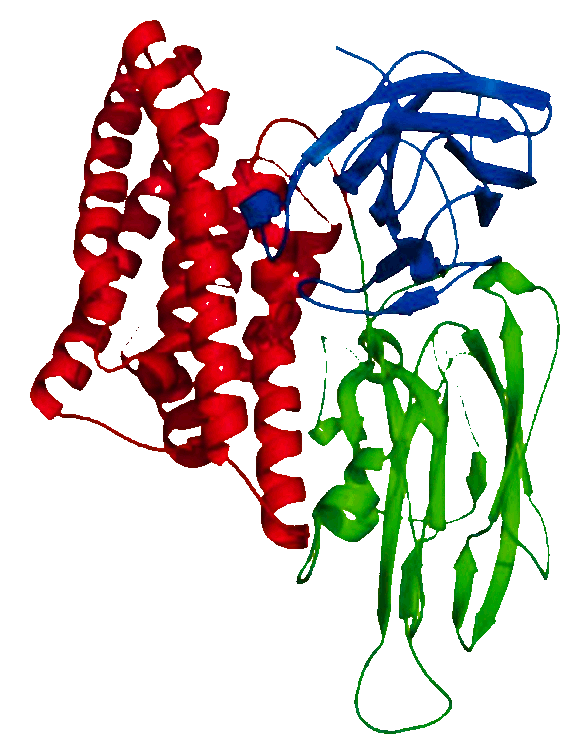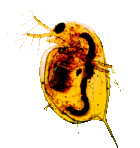| |
 |
 | '
The Population Dynamics of Daphnia At Constant Food Supply: a Review, Re-Evaluation and Analysis of Experimental Series From the Literature.
N. van der Hoeven1*
- TNO Division of Technology, for Society, Netherlands organization for applied scientific research, Department of Biology, P.O. Box 217, 2600 AE Delft, The Netherlands
*: Present address: ECOSTAT, Vondellaan 23, 2332 AA Leiden, The Netherlands
Abstract
Data on the population dynamics of five Daphnia species, viz. D. galeata mendotae, D. obtusa, D. pulicaria, D. pulex and D. magna, were collected from the literature. The experiments with constant food input were re-analysed for the oscillatory behaviour of the populations. Some populations appear to stabilize, whereas others continue to fluctuate. Some fluctuations are apparently caused by external factors. A decline to far below the average population size is always followed by a large population overshoot. Even populations that tend to stabilize do so by way of a series of damped oscillations. The oscillation period depends on, among other things, the Daphnia species, and increases with its size. Sometimes the same feeding regime leads to an equal or greater population size for a larger Daphnia species. This suggests that the chosen food species was not equally suitable for the two Daphnia species. No effect of crowding on the population size of Daphnia is found.
keywords: oscillations; Daphnia; Population Dynamics
Netherlands Journal of Zoology 39: 126-155, 1988
Biologische literatuur studies
Naast statistische analyses kan ECOSTAT ook literatuur onderzoek voor u verrichten. Bij deze studies kan Nelly van der Hoeven van ECOSTAT gebruik maken van haar ruime ervaring in onderzoek op het gebied van diverse biologische disiplines, waaronder
- Ecotoxicologie (experimenteel onderzoek in laboratorium en veld, modellen voor toxicologie, relatie tussen soort-gevoeligheid en ecosysteemgevoeligheid, bioaccumulatie en doorvergiftiging in de voedselketen, ...)
- Ecologie (ecosysteem modellen, parasiet-gastheer interacties, ...)
- Populatie Genetica (modellen, populatie genetica van plasmiden, genetische modificatie, ... )
Enkele voorbeelden van het werk van ECOSTAT
 De bacterie Bacillus thuringiensis produceert vele verschillende proteinen met een specifieke giftigheid voor een beperkte aantal soorten. De toxinen die giftig zijn voor plaaginsecten worden ter bestijding gebruikt, en de genen die voor die toxinen coderen worden soms ingebouwd in gewassen die vatbaar zijn voor die plaaginsecten. Nu er steeds meer gewassen komen die niet slechts één maar meerdere Bt toxinen produceren is de vraag gerezen of de menseltoxiciteit van die toxinen voor zowel doelorganismen als de rest van het ecosysteem voorspeld kan worden op grond van bekende gegevens over de toxiciteit van de toxinen afzonderlijk. In opdracht van de
COGEM heeft ECOSTAT een literatuurstudie verricht naar de mogelijke interacties tussen giftige Bt proteinen. Het rapport van deze studie is hier te verkrijgen.
De bacterie Bacillus thuringiensis produceert vele verschillende proteinen met een specifieke giftigheid voor een beperkte aantal soorten. De toxinen die giftig zijn voor plaaginsecten worden ter bestijding gebruikt, en de genen die voor die toxinen coderen worden soms ingebouwd in gewassen die vatbaar zijn voor die plaaginsecten. Nu er steeds meer gewassen komen die niet slechts één maar meerdere Bt toxinen produceren is de vraag gerezen of de menseltoxiciteit van die toxinen voor zowel doelorganismen als de rest van het ecosysteem voorspeld kan worden op grond van bekende gegevens over de toxiciteit van de toxinen afzonderlijk. In opdracht van de
COGEM heeft ECOSTAT een literatuurstudie verricht naar de mogelijke interacties tussen giftige Bt proteinen. Het rapport van deze studie is hier te verkrijgen.
 Als achtergrond voor haar onderzoek naar de effecten van toxische stoffen op Daphnia populaties heeft Nelly van der Hoeven een literatuurstudie verricht naar dergelijke populaties. Als achtergrond voor haar onderzoek naar de effecten van toxische stoffen op Daphnia populaties heeft Nelly van der Hoeven een literatuurstudie verricht naar dergelijke populaties.
|
|
|